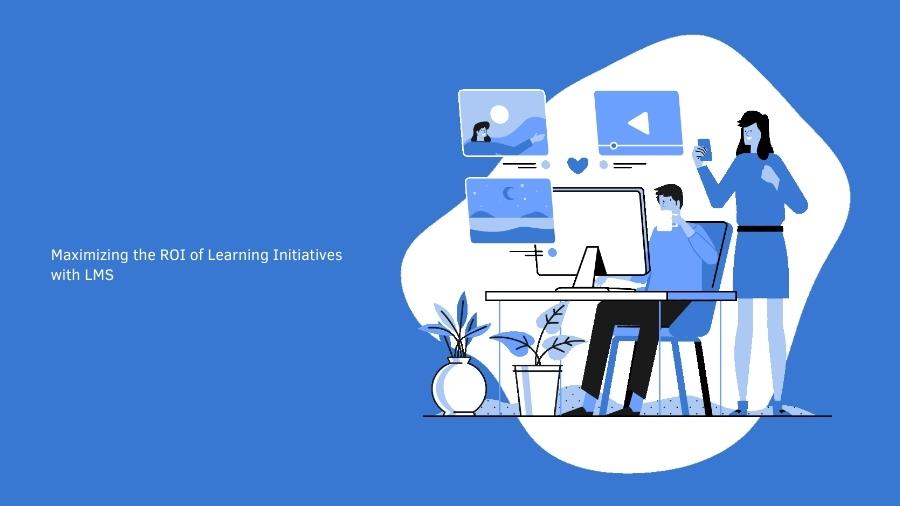A learning management system (LMS) helps organizations enhance their training and development programs by providing a centralized platform for managing and delivering online courses. It can be an invaluable tool for solving common challenges such as lack of consistency, scalability, accessibility, visibility, and tracking in traditional instructor-led training methods.
However, investing in an LMS does not guarantee positive returns unless it is utilized effectively to deliver measurable business outcomes. In this article, we will explore the best practices for maximizing the return on investment (ROI) of learning initiatives through the effective use of LMS solutions like Blackbaud.
Align Learning Objectives With Business Goals
The primary objective of any training program is to improve employee performance which should ultimately contribute towards achieving specific business goals. Therefore, it is important that your learning objectives are aligned with those goals to avoid wasting resources on irrelevant training content.
Before designing a course or adopting off-the-shelf content from a third-party provider, conduct a needs analysis to identify knowledge gaps and skills requirements that are crucial to meet your business objectives. Use data analytics tools within the LMS to track learner performance, evaluate satisfaction rates, and assess the overall impact on productivity and revenue growth.
Customize Training Content
One size does not fit all when it comes to effective training. Every organization has unique processes and workflows that require customized training materials tailored specifically for its employees. While off-the-shelf eLearning courses may cover generic topics such as compliance regulations or soft-skill communication techniques, you need to incorporate company-specific scenarios and examples that resonate better with your workforce.
Create interactive multimedia content such as videos and simulations, incorporating gamification elements like quizzes or leaderboards that engage learners while facilitating hands-on practice opportunities. Your learners could benefit from digitalized bite-sized microlearning modules accessible at their point of need via mobile devices, in addition to scheduled classroom training offered at designated venues.
Promote Learner Engagement
Simply producing engaging content does not guarantee high levels of learner engagement. You need to actively encourage your employees to participate in the training programs by creating a positive learning experience that aligns with their work schedules and career development aspirations.
Use LMS features such as automated notifications, completion certificates or badges, and progress-tracking metrics to motivate learners, recognize top performers, and provide continuous feedback on their learning journey. Encourage peer-to-peer collaboration opportunities by creating discussion forums, virtual coaching sessions, or social media groups where learners could share lessons learned and tips on best practices.
Measure Training Effectiveness
The ultimate goal of any investment in training is to achieve ROI through improved employee performance, contributing positively towards business outcomes. It is essential, therefore, to monitor the effectiveness of your LMS-based programs regularly.
Use data dashboards within your LMS platform or integrated analytics tools such as Google Analytics or xAPI (Experience API) to track important metrics such as training completion rates, time spent on content, quiz scores, or knowledge application statistics, such as reduced error rates and increased sales productivity.
Track how long it takes for employees who complete courses to see improvements in productivity. Adjustments may be necessary when objective measures do not improve after taking a course. Learners’ perceptions also matter in measuring effectiveness since satisfaction correlates strongly with performance gains.
Also read – Steps to Get WiFi in Your Car for Free
Ensure Continuous Improvement
Effective use of an LMS provides organizations with valuable insights into their workforce’s capacity-building journey. Whether you have an internal team managing your LMS or are working with third-party eLearning providers, the focus should always be placed on continuous improvement efforts. For instance, Insightful Technologies offers comprehensive management services, including course design, delivery, and analysis.
Regular audits can reveal new requirements for customizing existing content and designing new learning modules required for introducing innovations. They can also help determine the additional skills that may be necessary following changes in policies, standards, and procedures. The valuable data insights gained can be leveraged throughout the value chain by conducting periodic program reviews at business planning or budget meetings and incorporating feedback from all stakeholders, including employees who have completed courses.
Conclusion
An LMS is a powerful tool for promoting employee learning and development programs that generate measurable returns on investment. By aligning learning objectives with business goals, tailoring content to fit your company’s unique needs, empowering employees with skill-building opportunities, and tracking and measuring effectiveness results, you can maximize the end-to-end ROI of your initiatives. Ultimately, this leads to improved productivity rates and enhanced employee morale while enabling the shortening of timelines for achieving organizational goals.







Add Comment